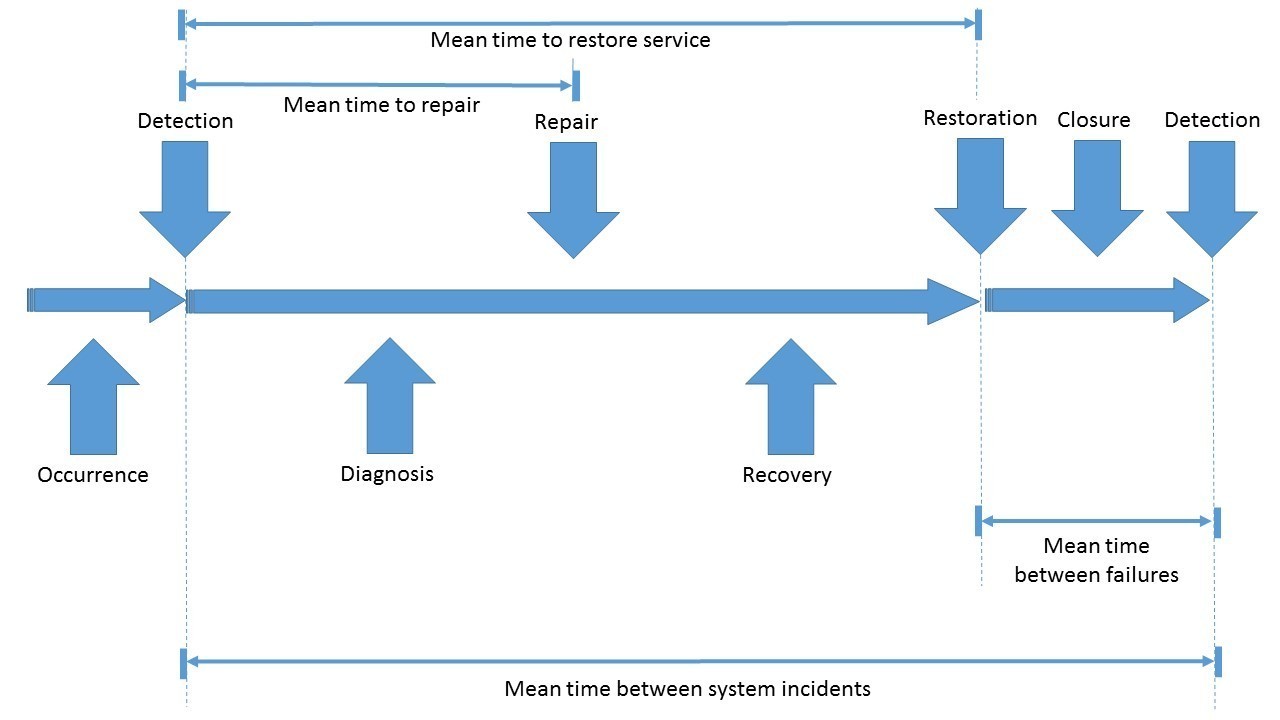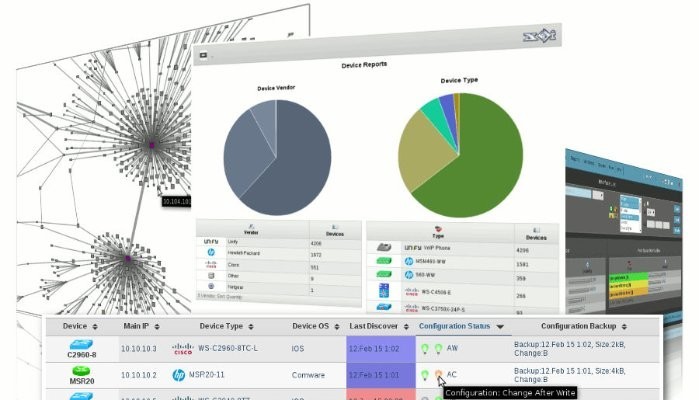⬇️The Hidden Culprit Behind Network Downtime is Configuration Management🔄
 Ronald Bartels
Ronald Bartels
When network outages occur, most people naturally focus on the immediate cause—whether it's a failed component, a power outage, or a software glitch. However, while these incidents trigger downtime, they aren't the real reason why downtime often drags on longer than it should. The true culprit lies in something far more insidious and often overlooked: network configuration management.
Downtime is best understood as the total time between when an outage occurs and when the affected service is fully restored to normal operations. This is commonly referred to as the Mean Time to Restore Service (MTTR). What many don't realize is that the incident itself is just the starting point; what happens next—how quickly and effectively the issue is detected, diagnosed, repaired, and resolved—determines the total duration of downtime.

Let's break down the various phases of downtime to understand how poor configuration management can be the single most significant causation of extended network outages.
1. Detection: The Starting Point
The first phase in the downtime cycle is detection—the time between when the outage occurs and when it is detected. In many cases, detection is relatively quick. Users notice the problem and report it, or automated monitoring tools send alerts. However, in some instances, particularly in fault-tolerant systems, a failure can go unnoticed until a secondary component fails, leading to a delayed detection.
Poor monitoring systems can lead to significant delays in detection, especially if there's no automated system in place to alert engineers about changes or failures.
2. Diagnosis: Pinpointing the Problem
After an outage is detected, the next step is diagnosing the issue. This phase can be particularly time-consuming, especially if the root cause of the outage is unclear. Often, the incident is triggered by a change—whether authorized, unauthorized, or erroneous—that wasn't immediately apparent.
A major factor in prolonged diagnosis time is the lack of tools to track and report changes in the network. Without proper configuration management, identifying what changed, when, and by whom becomes a daunting task. Tools like NeDi, which can harvest and store network configurations and report changes, are invaluable in this phase. Without such tools, network engineers are left to manually sift through logs and configurations, wasting precious time.
3. Repair: Fixing the Issue
Once the problem is diagnosed, the next phase is repair. This often involves replacing a failed device or restoring a corrupted configuration. The speed and efficiency of this process depend heavily on how well the network is documented and whether up-to-date configurations are readily available.
If a replacement device is needed, the process can be further delayed if the correct configuration isn't on hand, or if the firmware of the replacement doesn't match the failed unit. Again, this points back to poor configuration management. When configurations are not regularly updated and stored, the repair phase becomes a guessing game, further extending downtime.
4. Recovery: Bringing the Component Back Online
After the repair is completed, the next step is recovery—getting the failed component back online and ensuring it is functioning properly. This phase can be delayed if the replacement component isn't properly integrated into the network or if additional adjustments are needed to match the network's current state.
Good configuration management includes maintaining a comprehensive inventory of all network devices, their configurations, and their firmware versions. This ensures that when a component is replaced, it can be seamlessly integrated into the network, minimizing recovery time.
5. Restoration: Resuming Normal Operations
Finally, the last phase of downtime is restoration—returning the network to full operational status. Many network engineers mistakenly believe that downtime ends when they can successfully ping the device. However, true restoration means that all network services are functioning as they should, and users can confirm that operations have returned to normal.
This phase can be prolonged if proper testing protocols aren't in place. Relying solely on basic connectivity tests, like ICMP pings, isn't enough. Network engineers need to perform higher-level tests to ensure that all services are working correctly. This requires a mature testing methodology and a clear understanding of the network services in use, something that can be greatly facilitated by comprehensive configuration management.
The Real Culprit | Poor Configuration Management
When you look at the entire downtime cycle, it's clear that the actual cause of extended downtime isn't the initial incident but the inefficiencies in the processes that follow. At the heart of these inefficiencies is poor network configuration management.
Configuration management is about more than just having a backup of your network settings; it's about having real-time visibility into your network, knowing what changes have been made, and being able to quickly revert to a known good state. It's about having a comprehensive inventory of your network components and their configurations, so you can quickly replace and integrate failed components.
In the absence of effective configuration management, detection is delayed, diagnosis becomes a drawn-out process, repairs are hampered by missing or outdated information, recovery is prolonged, and restoration is incomplete. This leads to downtime that lasts far longer than it should, with a cascading impact on business operations.

How Fusion SD-WAN Solves Configuration Management Challenges in the Last Mile
The challenges of network downtime, as we've discussed, often stem from poor configuration management. This issue is particularly pronounced in the last mile of network connectivity, where traditional WAN solutions fall short in terms of speed and reliability. However, Fusion SD-WAN's automated configuration management offers a robust solution to these challenges, effectively reducing downtime and ensuring seamless operations.
Centralized Configuration Management | Control at Your Fingertips
One of the standout features of Fusion SD-WAN is its centralized portal for configuration management. This portal allows network administrators to manage, monitor, and update network configurations across all connected sites from a single, intuitive interface. By centralizing these functions, Fusion SD-WAN eliminates the need for manual interventions at individual sites, which are often the root cause of delays and errors.
This centralized approach ensures that all configurations are consistent and up-to-date, minimizing the risk of misconfigurations that could lead to extended downtime. It also provides real-time visibility into the network, allowing for immediate detection of any changes or issues, which accelerates the diagnosis and repair phases of the downtime cycle.
Zero-Touch Provisioning | Fast as an Olympic Sprint
Another game-changing feature of Fusion SD-WAN is its zero-touch provisioning capability. This means that once the SD-WAN device is connected, it automatically downloads its configuration from the central portal and becomes operational without any manual setup. The process is as fast as the time it takes for an Olympic 100m sprint—just a few seconds.
This rapid provisioning significantly reduces the time between when a new device is deployed and when it becomes fully operational. In the event of a device failure, a replacement device can be shipped, connected, and brought online in record time, ensuring that service disruption is kept to an absolute minimum.
Mitigating Last Mile Challenges
The last mile has long been a problematic area in networking, particularly when it comes to maintaining consistent and reliable configurations across geographically dispersed sites. Fusion SD-WAN's automated configuration management mitigates these issues by ensuring that all sites are configured correctly and uniformly, regardless of their location.
With Fusion SD-WAN, there's no need to worry about manual configuration errors or delays in deploying new services. The centralized portal and zero-touch provisioning work in tandem to ensure that the last mile is as robust and reliable as the rest of the network, effectively eliminating one of the most common causes of extended downtime.
Wrap | The Future of Network Management
Fusion SD-WAN's automated configuration management represents a significant leap forward in network management, particularly in the critical last mile. By centralizing control, automating provisioning, and reducing the potential for human error, Fusion SD-WAN ensures that your network is always operating at peak efficiency.
In an era where downtime can have serious financial and operational consequences, investing in a solution like Fusion SD-WAN is not just a smart choice—it's a necessary one. With the ability to mitigate downtime and provide near-instantaneous recovery, Fusion SD-WAN is the key to ensuring your business remains connected, no matter what challenges the network may face.
If you want to minimize downtime, don't just focus on the incident that triggered it. Instead, look at the entire process from detection to restoration, and identify where time is being lost. More often than not, you'll find that the root cause of prolonged downtime is poor configuration management.
Investing in good configuration management tools and practices is one of the most effective ways to ensure that when outages do occur, they are resolved as quickly as possible. It's not just about preventing incidents; it's about being prepared to handle them efficiently when they inevitably happen. And in the world of networking, time truly is money.
Ronald Bartels ensures that Internet inhabiting things are connected reliably online at Fusion Broadband South Africa - the leading specialized SD-WAN provider in South Africa. Learn more about the best SD-WAN provider in the world! 👉 Contact Fusion
Subscribe to my newsletter
Read articles from Ronald Bartels directly inside your inbox. Subscribe to the newsletter, and don't miss out.
Written by

Ronald Bartels
Ronald Bartels
Driving SD-WAN Adoption in South Africa